We Got Hit by a Google Penalty After Publishing 22,000 AI Pages. Here's What Happened.
How we lost all our organic traffic overnight after publishing 22,000 AI-generated pages, what we learned from the penalty, and how we rebuilt with a better approach.
Tags
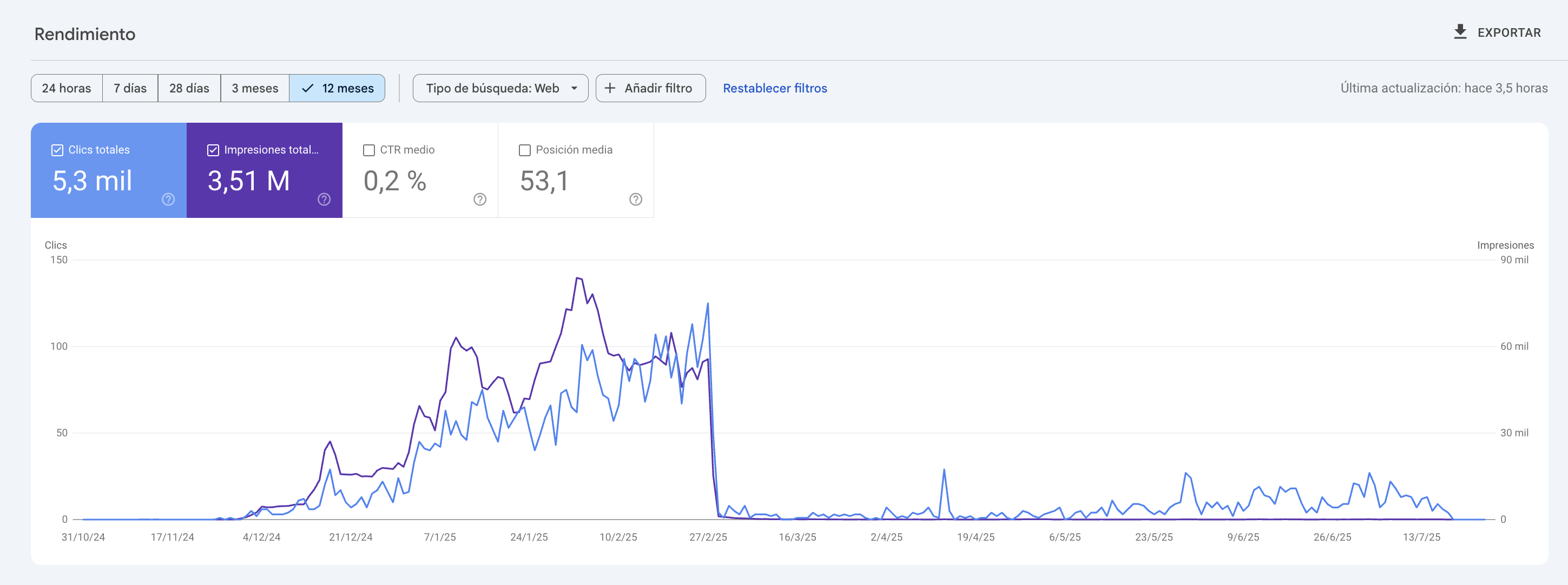
We Got Hit by a Google Penalty After Publishing 22,000 AI Pages. Here's What Happened.
A few days ago I posted on LinkedIn about how our website got completely wiped from Google after publishing over 22,000 AI-generated pages (in the LinkedIn post comments we said they were around 50k, we stand corrected). I thought it would just be a quick story to share, but it got way more traction than expected (+600 comments and +500,000 impressions). A bunch of people asked questions in the comments or DMs, so I'm writing this to go deeper and explain everything: what worked, what didn't, and what we're doing differently now.
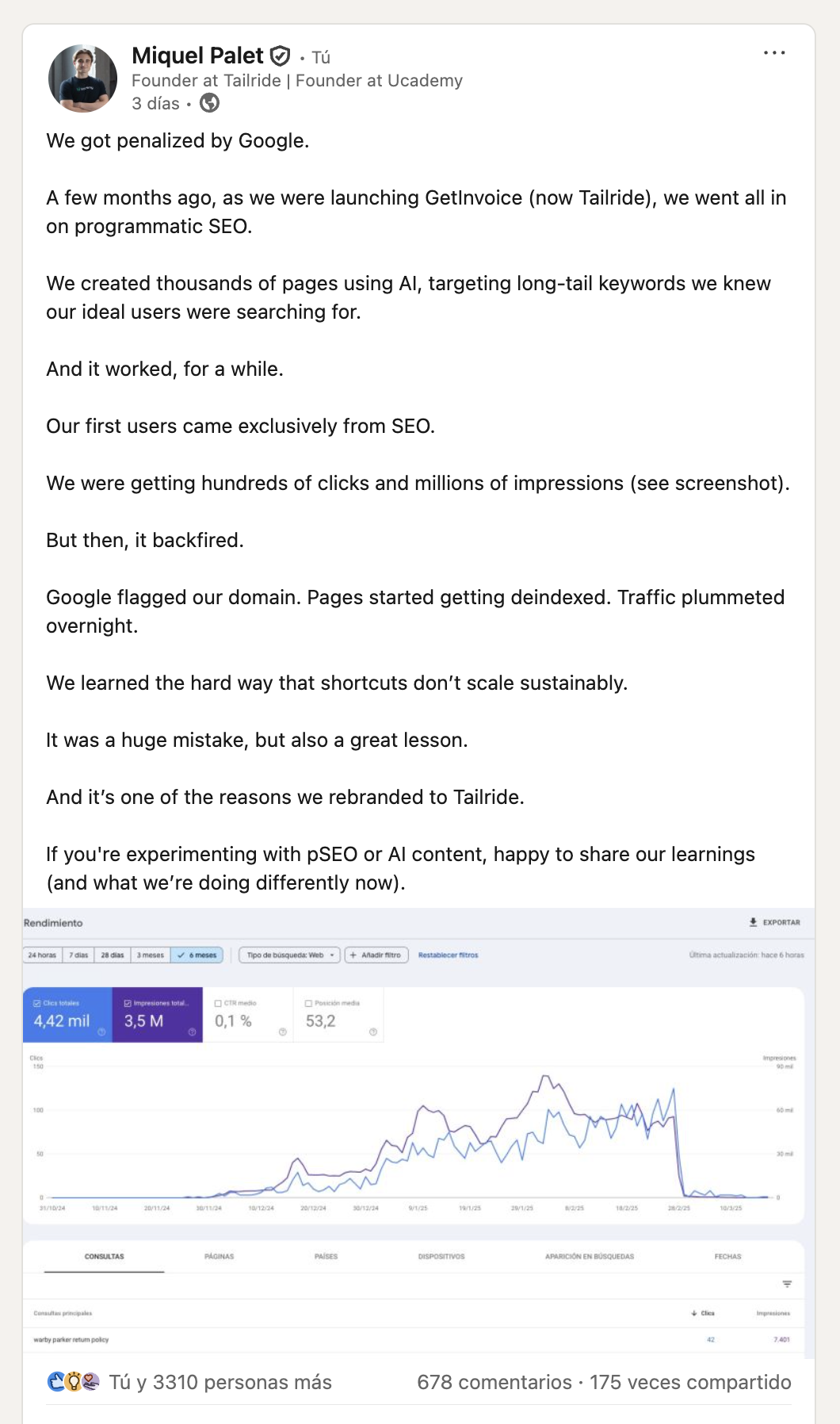 Caption: LinkedIn post about the penalty
Caption: LinkedIn post about the penalty
This is not meant to be advice, just our experience. If you're thinking of doing pSEO with AI or trying to grow a startup through SEO, maybe it'll help.
The Beginning
We launched GetInvoice (now Tailride) in the third week of November 2024. It's a product that pulls invoices from different sources like emails and portals, extracts the data, and forwards the information to accounting softwares or other destinations, mainly useful for automating boring finance stuff for small companies.
From day one, we needed a growth channel. No audience, no brand, no money to throw at ads. So we decided to test programmatic SEO. I'd been reading about AI + pSEO and how some companies were ranking fast with long-tail, low competition keywords. So we said it wouldn't hurt to try it.
The idea was simple:
- •Scrape source content (like Zara's return policy)
- •Prompt it through AI to turn it into a structured blog post
- •Publish it automatically to our domain
No tools. We built the whole flow ourselves. Also, we weren't manually reviewing the content output, we just published it.
The Initial Success
We started small: about 300 /return-policy/ pages explaining how refunds worked at major ecommerce stores like Zara, Uniqlo, Nordstrom, etc. These started indexing and ranking. Pretty quickly, we were on page 1 for searches like "Warby Parker return policy" and "Shopbop returns."
It worked. So we scaled.
Here are 2 examples of how these pages looked like (removed now):
You can see that these contain very little content (around ~200 words), and there's a section that is the exact same one in each of the return policies (the "How to Return" section).
We went from 300 pages to over 22,000 in just a few months. We added /swift-code/ pages (~4,000), a bunch of /what-is/ financial term pages (~5,000), and more. The pages were linked internally, added to the sitemap, and submitted to GSC.
Here we have a couple examples for these new pages we had created:
These pages had some more content than the first ones, but for the swift code pages they had a very high amount of duplicated content between them (most of the sections were the same in each page). For both of them, the content was really unrelated to our product and it was not original content, it can easily be found in lots of places on the internet.
You can see in the images that the pages did have internal links between them and they were on the sitemap, so discoverability shouldn't have been a problem.
In February 2025, we were getting ~130 clicks/day organically. These weren't high-intent keywords, but we did get some signups and conversions. Not a ton, but enough to prove that it wasn't completely useless traffic.
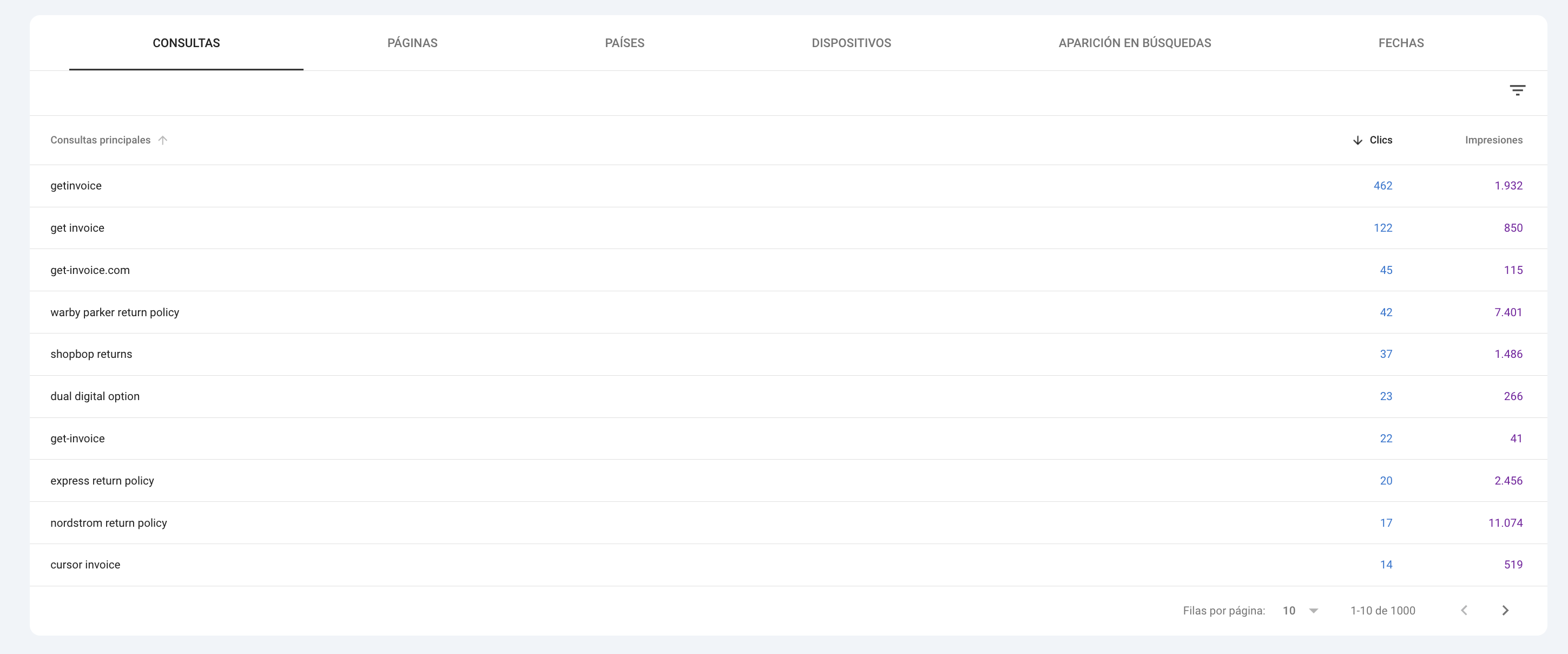 Caption: Screenshot of Google Search Console's query's that got us the most amount of clicks in the last 12 months.
Caption: Screenshot of Google Search Console's query's that got us the most amount of clicks in the last 12 months.
At the time, we were excited. We thought we were onto something. But in reality, we were about to get crushed.
The Penalty
On February 28th, the traffic dropped to zero. Literally overnight.
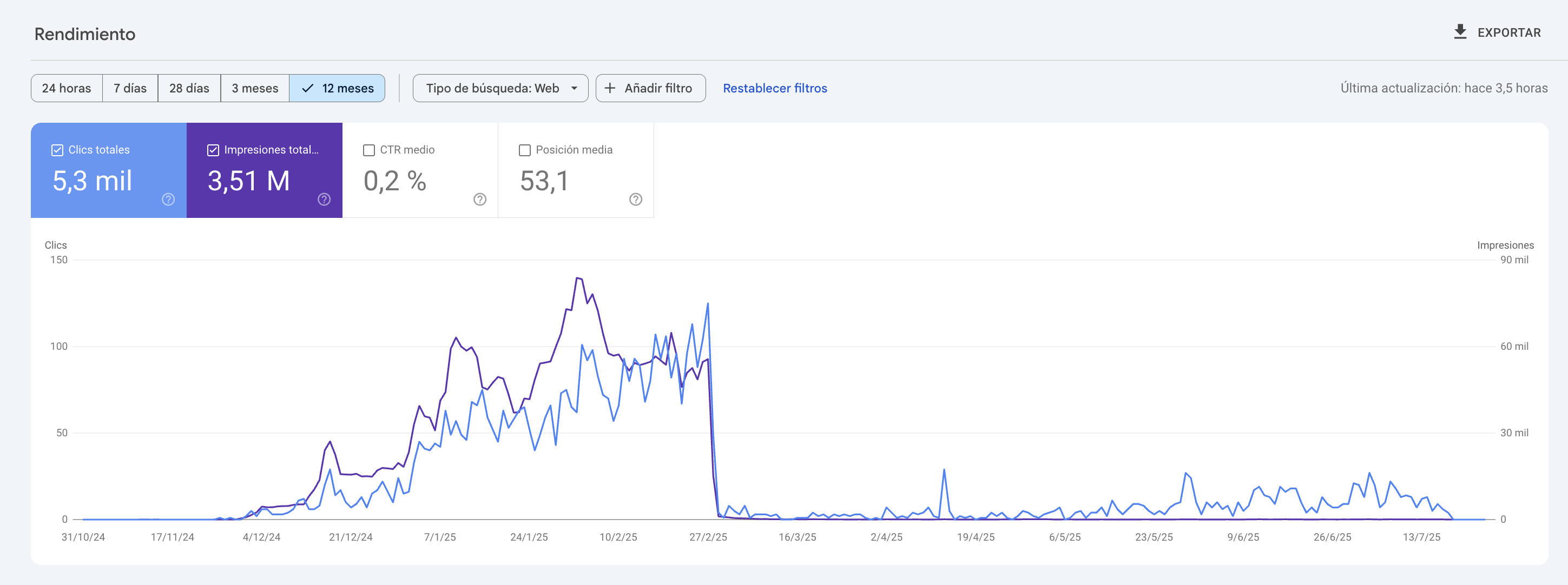 Caption: Screenshot of Google Search Console's Performance Chart for the last 12 Months (someone on LinkedIn suggested that the screenshot was fake. It's not, the numbers are in spanish format).
Caption: Screenshot of Google Search Console's Performance Chart for the last 12 Months (someone on LinkedIn suggested that the screenshot was fake. It's not, the numbers are in spanish format).
No messages in Search Console. No warning. No gradual decline. Just flatline.
At first we thought it might be a bug or a crawl delay, but the indexed page count started falling too. Over the next six months, we went from 20,000+ indexed pages to 1 (the homepage). We still don't know exactly what triggered it, but we're pretty sure it was algorithmic. No manual action, just a quiet kill.
Some people asked if we got hit by the March 2025 Core Update, which Google started rolling out on March 13th. But I don't think that's what happened. Our drop started on February 28th, two weeks before the update even began. That's why I'm convinced this was algorithmic, but unrelated to that specific core update.
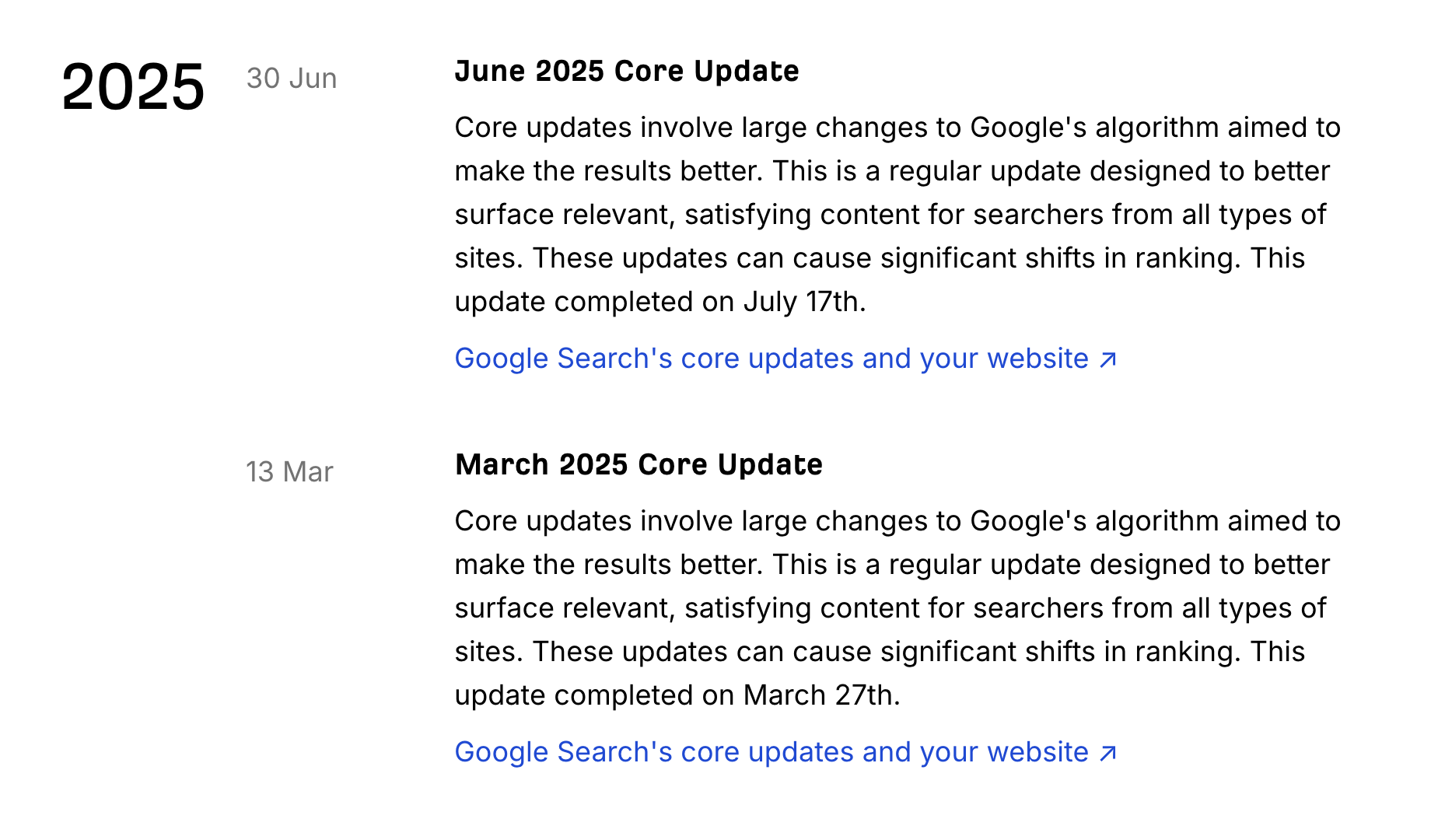 Caption: 2025 Google Updates History from ahrefs.com/google-algorithm-updates
Caption: 2025 Google Updates History from ahrefs.com/google-algorithm-updates
After the traffic drop, we also made sure to remove all the pages we had created with this method, hoping that Google would notice and would somehow remove the penalty. This didn't happen and there were never signs of recovery.
The Rebrand
To make things even more fun, we got hit with a cease and desist from GetMyInvoices.com around the same time. They said our name, "GetInvoice," was too similar. We had honestly never heard of them when we launched. Total mistake on our side. But that, combined with the SEO wipeout, made the decision easy: rebrand everything and start from scratch.
So that's how Tailride was born. We launched the new brand on July 10th, 2025. New name, new domain, clean slate.
And now, everything is different (or will be).
What We Did Wrong (Pretty Much Everything)
Looking back, there were a lot of red flags we ignored:
- •We published way too many pages, way too fast, with basically no authority (our DR was ~0 when we started).
- •The content was technically "original" (AI rewritten) but not very valuable. It was surface-level. No real insight.
- •Most of the keywords we targeted were completely unrelated to our product. We ranked for stuff like "dual digital option" and "forever 21 return policy." Cool for traffic, and some conversions, but Google didn't like it.
- •We didn't build trust. To Google, we probably looked like a spammy site trying to game the system.
If I had to guess, it was the combination of thin content + irrelevant intent + scaling aggressively on a weak domain that did it.
Was AI the Problem?
No. AI wasn't the problem.
AI is just a tool. The way we used it was the problem.
You can use AI to create good content. But what we were doing was basically repackaging scraped data and wrapping it in fluff. It ranked because the competition was weak, not because it was good.
What We're Doing Differently Now
The rebrand gave us a reason to reset. So we completely changed our SEO approach.
Now we:
- •Do proper keyword research using Ahrefs
- •Only go after keywords that are directly relevant to what Tailride does
- •Publish one high-quality page per day (not 500)
- •Have a human write and edit each article, sometimes using AI to outline or assist, but never fully automated
- •Include images, structure, and actual depth in every post
We're already ranking again. Not huge traffic yet, but we're showing up for stuff like "invoice tracking," "OCR expense management," "how to keep track of invoices", stuff that actually brings relevant users.
Also, our Domain Rating is now 31. Before the penalty, we had only reached 18. So we're starting stronger than before, just slower and smarter.
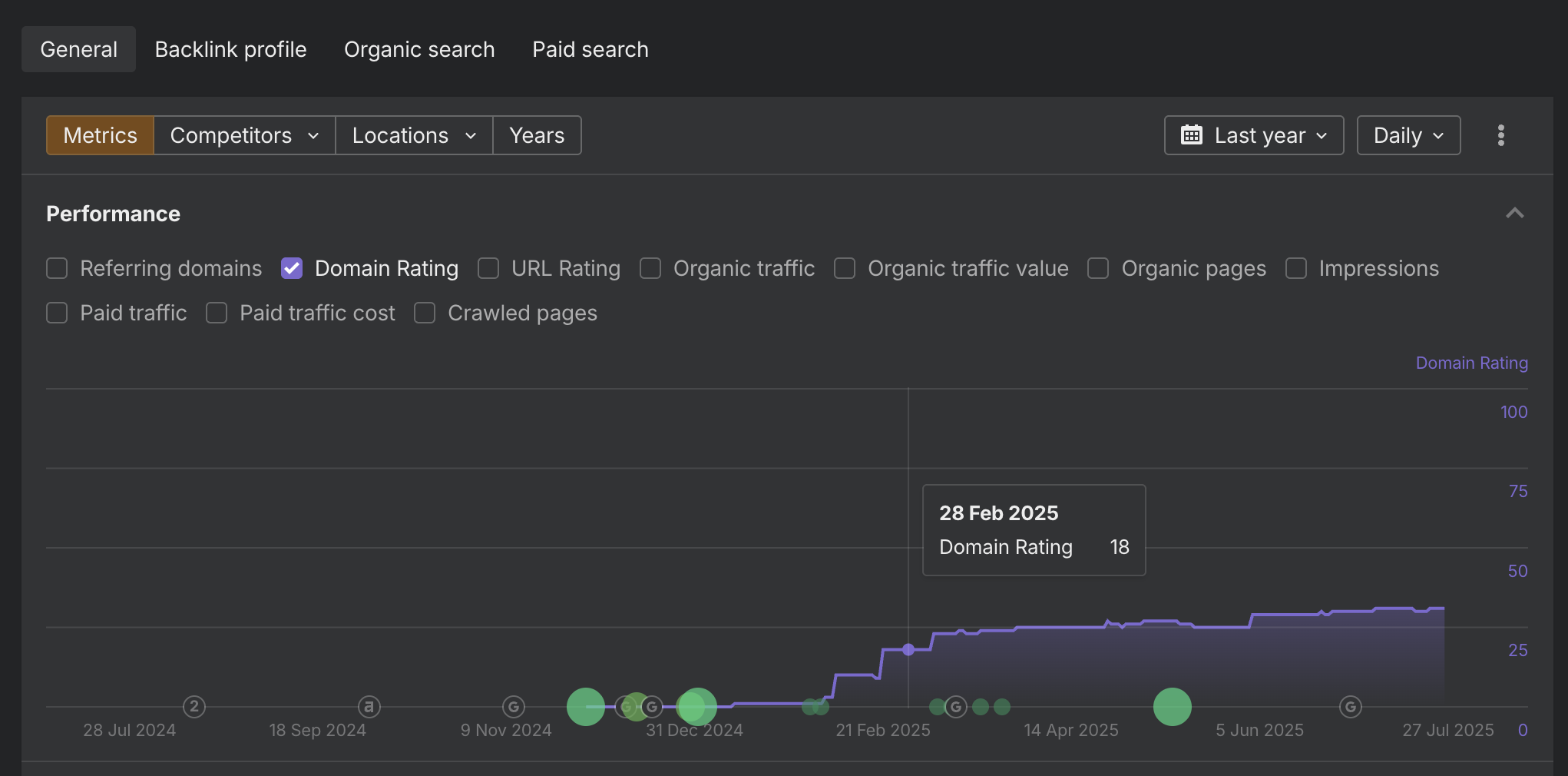 Caption: See the DR evolution for the get-invoice.com domain on Ahrefs
Caption: See the DR evolution for the get-invoice.com domain on Ahrefs
Check some of the new pages we've created here:
- •https://tailride.so/blog/best-way-to-track-invoices
- •https://tailride.so/blog/receipt-scanning-software
- •https://tailride.so/blog/integrate-with-xero
You can see that now:
- •There's a lot more content
- •The content is original
- •There's a lot less new pages (1 or 2 per day)
Questions We Got (And Our Answers)
A lot of people asked the same few things after I shared the post, so here's my take:
What was the biggest lesson? Don't publish garbage. Thin content, bad targeting, and spammy scale will kill you. Focus on content that actually helps your user. Not just content that ranks.
Was this because of AI? Not directly. The issue wasn't AI, it was scale + quality + trust. We tried to automate something that really needed more care.
Could you have avoided it by posting slower? Probably. If we had done 1 or 2 AI-assisted articles per day, we might have been fine. The speed made it obvious to Google that we were gaming the system.
Would you still do programmatic SEO today? Yes, but only with a strong domain, clear relevance to your product, and enough authority to back it up. Not as a shortcut.
What would you do differently if you started again? We'd do keyword research first, focus only on queries related to our product, build authority with fewer, better articles, and ignore everything that doesn't align with user intent.
Final Thoughts
Getting penalized sucked. There's no sugar-coating it. We lost all our traffic overnight, had to rebrand under legal pressure, and basically restarted the business from zero.
But honestly, it forced us to get serious. To stop hacking things together and start doing things properly.
Now, Tailride has a clearer identity, a cleaner strategy, and an actual shot at long-term growth. We're still small, but at least we're not invisible anymore.
If you're using pSEO or AI content at scale, I'd just say this: build trust, add value, and don't rush it. If it feels like a hack, it probably won't last.
And if you're curious what we're doing now, you can check us out at tailride.so. We're building a simple way to manage your invoices and expenses automatically.
Bonus: We paid Ilias Ism to record a 20 minute video audit of our domain. If you're curious, you can check it out here.